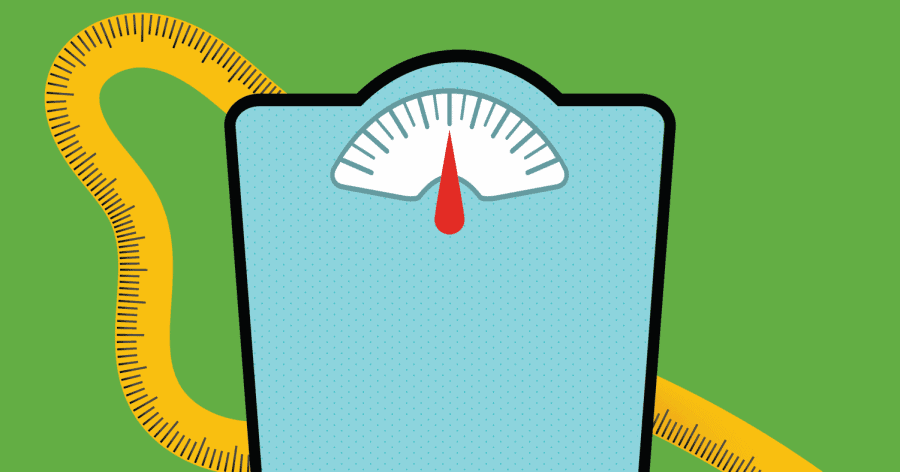‘Secretly affected by it’: Why young adults are so susceptible to disordered eating
About one in ten college-aged people experience eating disorders. Experts say stigmas are deeply embedded.
March 8, 2021
As students traverse a year like no other, many are taking a hard look at their mental health and trying to do their best to stay well. As National Eating Disorder Awareness Week closed out the month of February just two weeks ago, some are thinking more about their relationships with exercise and food.
National Eating Disorder Awareness Week extends from Feb. 22 through Feb. 28 and is dedicated to spreading awareness about the effects, symptoms and warning signs of eating disorders, along with bringing misconceptions about mental health, eating disorders (EDs) and body dysmorphia to light.
Typically, the holiday is celebrated by a myriad of educational social media campaigns, as well as forums and workshops to encourage body positivity and healthy eating habits.
What are eating disorders?
According to the National Institute of Mental Health (NIMH), the average age of onset for anorexia nervosa is 19, bulimia nervosa is 20 and binge-eating disorder is 25, putting college-age students in the main risk group. Though not as highly regarded in discussions about students and their mental health, eating disorders are a prevalent problem on college campuses and take many forms that can be hard to recognize.
Sheena Gregg, a registered dietitian nutritionist and Assistant Director of The University of Alabama’s department of Health Promotion and Wellness, described eating disorders as an intricate issue with many components.
“Eating disorders are complex illnesses that involve individuals having severe disturbances in their eating behaviors and related thoughts and emotions,” she said. “This includes being preoccupied with food to the point of affecting the overall quality of life, including health status and ability to participate in everyday activities.”
According to the National Eating Disorders Association (NEDA), the most significant contributor to the development of eating disorders is the praise and idealization of thinness in our society.
It is estimated that at least 30 million people within America struggle with an eating disorder, which is over 9% of the population. Among mental illnesses, EDs also have an extreme mortality rate that is second only to opioid addiction.
‘It had just stuck with me’
Ciara Callicott, a UA sophomore double majoring in political science and international relations, said she dealt with an eating disorder and negative body image during her time in the dance world.
“Body dysmorphia has been a huge part of my life since I was about 9 years old,” she said. “In dance, your body is your instrument and it’s really important to keep track of how you treat it so that it’s in peak physical condition. There’s this idea that peak physical condition means skinny, but skinny isn’t, for everybody, mutually exclusive with health.”
When Callicott was twelve years old, one of her biggest goals was to dance in “The Nutcracker,” playing the role of Callicott. But throughout the process of her audition, she was told that she wouldn’t get the role because it was unlikely she would fit into the costumes the dance company used year after year for the production.
“That was the first time I had ever even thought about how much I weigh or having to watch what I eat and, since then, it had just stuck with me,” she said.
According to a clinical report from the American Academy of Pediatrics, roughly 62% of teenage girls and 29% of teenage boys focus heavily on their weight or get involved in dieting culture with young adults between the ages of 15-24 to be most at risk. Things such as social media trends, athletics or other mental health concerns typically exacerbate these risks.
‘Secretly affected by it’
As a campus dietitian, Gregg is well aware of how these issues affect college students as well.
“Research indicates 10-20% of college-aged women experience an ED and 4-10% of college-aged men experience an ED,” Gregg said. “The college environment has many triggers including the pressure from peers to be thin or look a certain way, constantly eating meals with others in environments like the sorority house, and also other stress triggers of being stressed academically, financially or emotionally while in college.”
Within college culture and on campus, elements of body dysmorphia or unhealthy relationships with food can sneak into daily conversations.
“Something that was shocking was how normalized it is among college-age young women,” Callicott said. “It feels like there are so many people that struggle with their relationship with their bodies and diet and an unbelievable amount of people are secretly affected by it.”
On the average college campus, it’s typical to hear people talking about their eating habits without recognizing how harmful these comments are.
Some examples might include casually bringing up how little you or somebody ate on any given day, talk of the “Freshman 15” or the “Sorority 40,” comments on other people’s plates, or not eating during the day before a night out to “cancel out” the calories consumed while drinking alcohol or to avoid feeling bloated in an outfit.
“My freshman year was definitely a lot of pressure because I wanted to figure out my footing and get acclimated, but I found myself parroting a lot of damaging language that I didn’t necessarily believe because it’s what I heard all the time even while I was in recovery myself,” Callicott said.
Some of this language is so deeply ingrained in people’s daily lives that some don’t even realize how significantly they can instill harmful stigmas or narratives into our minds and others’. These issues are everywhere and, sometimes, can be difficult to recognize due to the wide variety of forms they can take.
“I often remind groups that I educate that eating disorders are not exclusively a disorder where someone is trying to be thin, but instead can be seen as an unhealthy coping mechanism for an underlying issue in their life,” Gregg said. “I frequently have clients with eating disorders that started as a result of trying to cope with a past sexual assault, a parent dying or other trauma that has happened in their life.”
An intersectional issue
These issues do not just affect just young women, but people of all identities, including men and transgender or gender non-conforming people as well, which can also manifest into gender dysphoria.
“Another misconception about eating disorders is that they only affect thin white women. Eating disorders do not discriminate and can happen to all genders, identities and levels of socioeconomic status,” Gregg said.
Gregg said it’s crucial to realize eating disorders are an intersectional issue. In a culture where everyone’s physical flaws seem to be magnified, young people are especially vulnerable.
Gregg said risk factors can present themselves in a number of ways.
“Risk factors for developing an eating disorder are multifaceted,” she said. “Having a family member with an eating disorder or having a personal history of chronic dieting can contribute to developing an eating disorder.”
Gregg said those with high levels of perfectionism, body dissatisfaction or personal history of an anxiety disorder can be at higher risk. Social triggers can include constant exposure to weight stigma messaging, having a small support system or experiencing a traumatic event, she said.
Callicott said body image isn’t constant and has the ability to shift depending on the day, which is why she advocates for positive self-talk and body positivity.
“We’re doing good work to redefine beauty standards that contribute to body image issues, but they’re still there, so it’s important to learn what beauty means to you in a subjective way,” Callicott said. “Especially when we’re young, it’s really easy to think that the little things are our whole world, but I had to realize that in the grand scheme of things, my weight isn’t really that important.”
But it’s no secret that coming to that realization is extremely difficult, to say the least. Struggling with body image or eating disorders at any level is no easy feat.
If you’re a student and feel the need to reach out to ask questions or get help, Gregg recommends resources on-campus such as the UA Counseling Center, Student Health Center & Pharmacy, Office of Student Care and Wellbeing, and the Body Appreciation and Self Kindness support group, along with national off-campus resources such as The Alliance for Eating Disorder Awareness, The National Eating Disorders Association and The National Eating Disorder Collaboration.








